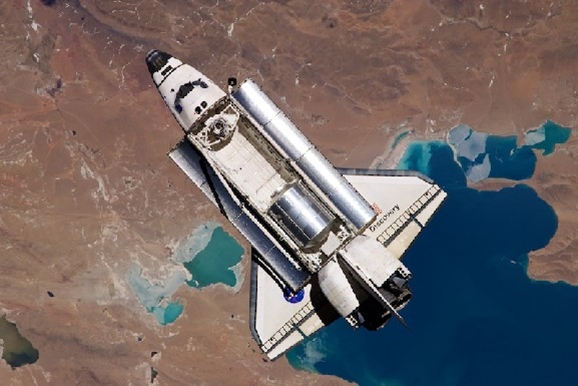An Astronaut Explains The Nuts And Bolts Of Space Photography
This article is more than 2 years old
Over the half-century of its existence, NASA has provided the world with some amazing images. Whether it’s the dusty surface of Mars, the stunning rings of Saturn, or those first images from the Moon, with our home hanging in the distance, NASA has been a window for the average person into the wonders that lay beyond our atmosphere. Because they serve as our eyes in the great beyond, many astronauts have had to become amateur photographers, on top of all their other duties. After all, nobody wants to see all the pictures from the ISS returned with some dude’s thumb blocking out half the frame. While it’s not a duty most of us automatically think of when we think “astronaut,” former Space Shuttle Discovery commander Captain Alan Poindexter has taken to The Luminous Landscape to provide some insights into how those amazing images are taken.

Poindexter commanded the Discovery during her penultimate mission back in 2010, and he approached the task of space photography with an ace up his sleeve, because his wife is a photographer. Apparently NASA takes the subject of space photography very seriously, providing astronauts with training and even with experimental prototype cameras. The results speak for themselves, but here’s Poindexter explaining how the image above was taken:
Consider this image of the Milky Way. I shot it out of the cockpit window during our undocked timeframe. We saw the Milky Way, quickly darkened the cabin, and then mounted the camera on one of many articulating support arms (there are numerous fixed mount points scattered about the crew module) that we had available.
The fixed points and articulating arms were great to hold a camera in position, but weren’t a rock steady support. Vibrations induced by fans, jet firings, and other machinery were transmitted through the structure of the shuttle to the camera. This caused some difficulty getting sharp images. I tried to anchor myself really well and provide a little “human damping” similar to what one would do with a long telephoto lens.
In any case, this is a really unique frame. The coastline you see is the coast of India. Note that the city lights are blurred due to having the shutter open for 4 seconds (in that time we traveled 20 miles over the Earth’s surface). The stars, however, are not blurred at all. We were in the Inertial Attitude Hold mode so our attitude relative to the stars was constant. The colors you see are exactly as the camera captured them. You can make out the different layers of the atmosphere and if you look closely, you can see stars shining through the atmosphere. Note how thin our atmosphere is.
The article is a fascinating read, and I highly recommend clicking over and checking it out. There are also tons of gorgeous photographs, only a few of which we’re posting here. It makes you truly appreciate the work that these guys do, not just to advance science, but to help us all feel, in our own little way, what it’s like to be up there.















